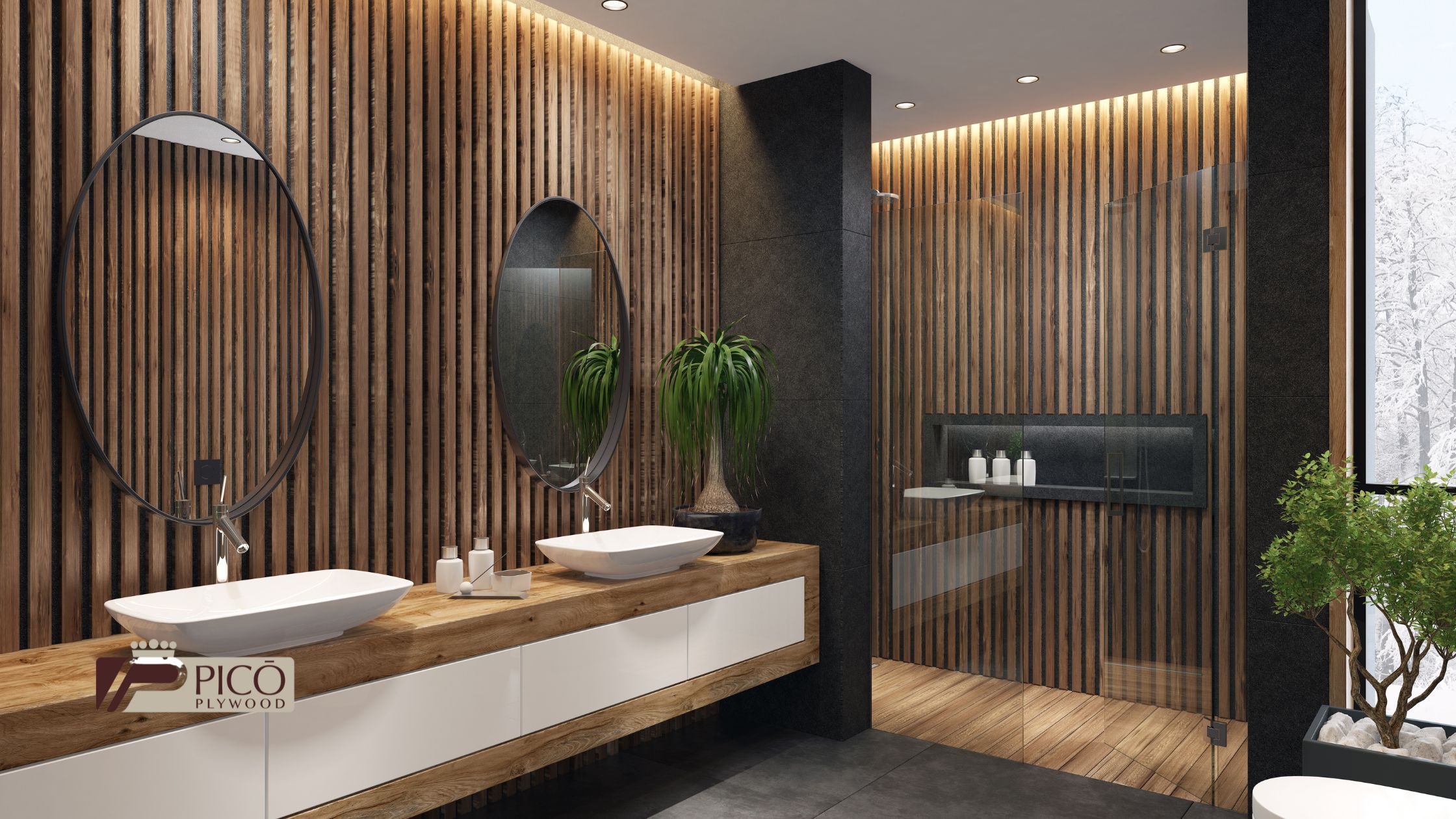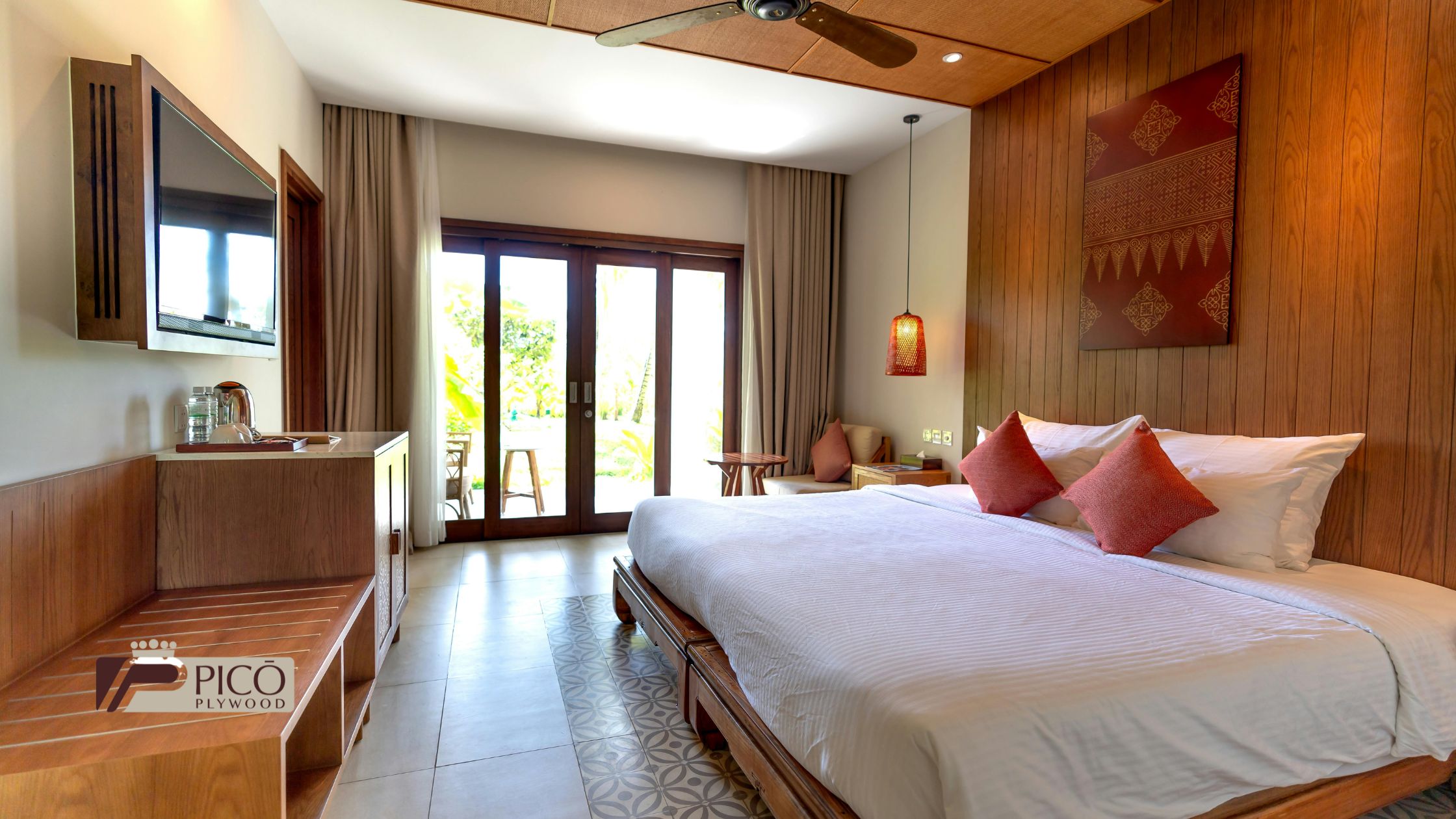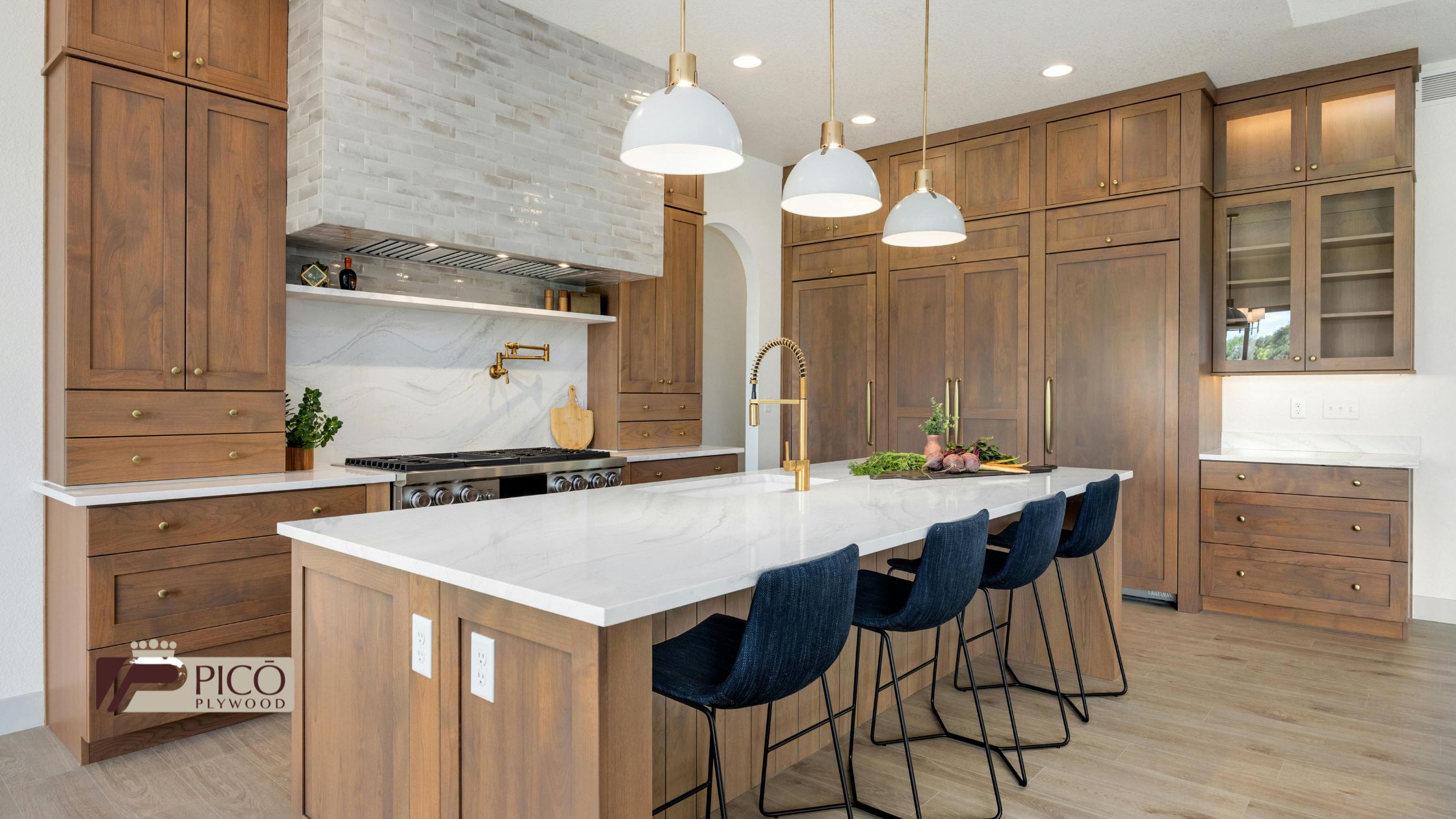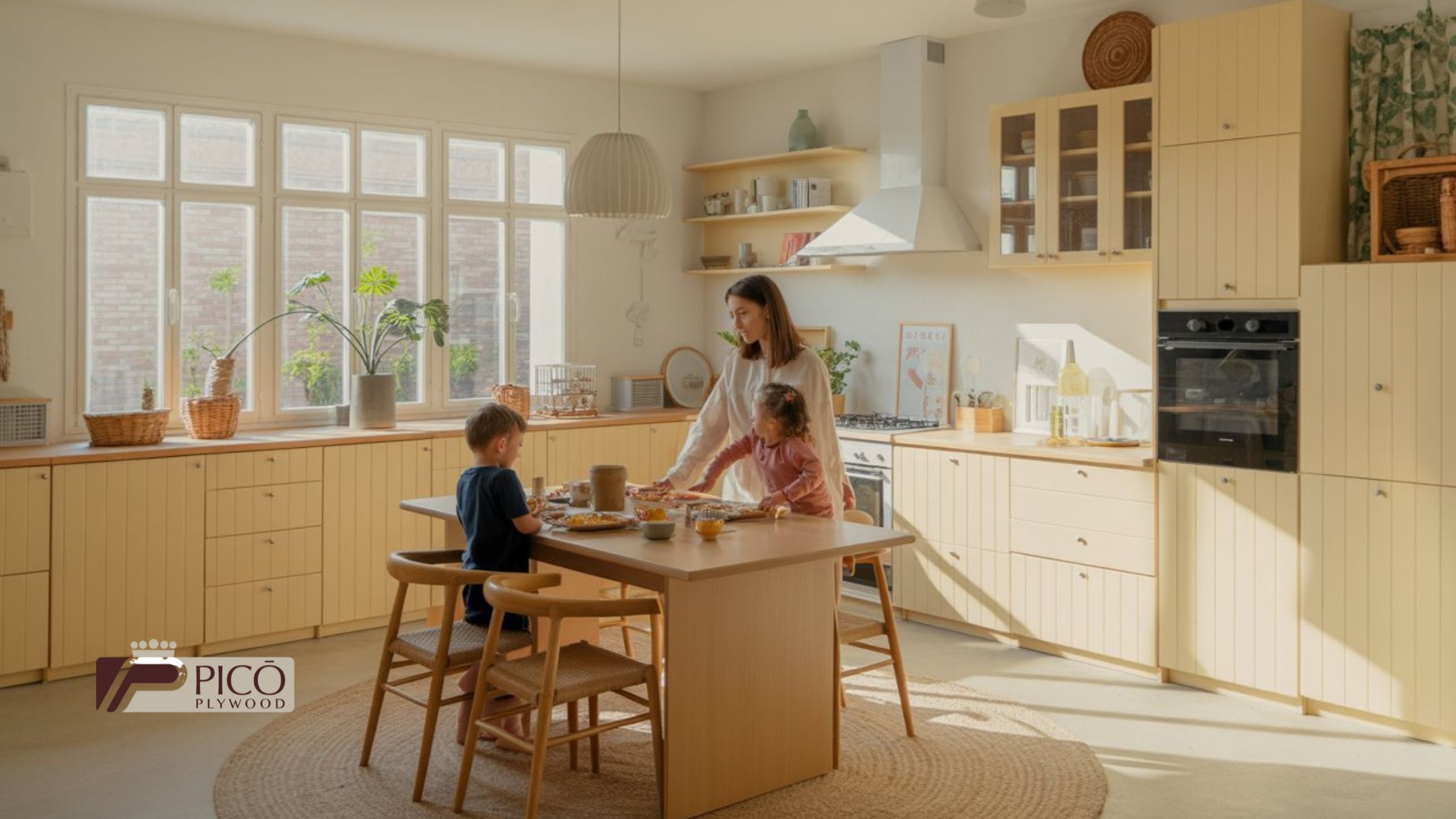pico Plywood Contact
Contact Information
To learn more about our Plywood Products or discuss your project requirements, please reach out to us through the following channels.
wood's advantages
Discover the healthiest and most sustainable options for your woodworking and construction projects.

Table of Contents for the Article
Today, more and more construction and woodworking professionals are seeking healthier alternatives for their projects. Low-formaldehyde plywood has become a top choice for those who prioritize indoor air quality and environmental sustainability. If you’re wondering what options are available on the market and how to identify the best products, this complete guide will help you make informed decisions.
Formaldehyde is an organic chemical compound (CH₂O) that appears as a colorless gas with a strong, distinctive odor. It occurs naturally in small amounts in the air but is also industrially produced for a wide range of commercial applications, one of the most common being the manufacture of resins and adhesives.
In the traditional plywood industry, formaldehyde is used in urea-formaldehyde (UF) and melamine-formaldehyde (MF) resins, which serve as adhesives between the layers of wood veneer. These resins provide strong, durable bonding, but they have the downside of releasing formaldehyde vapors into the air for years after production.
Prolonged exposure to formaldehyde can cause various health issues. Common symptoms include irritation of the eyes, nose, and throat, headaches, and skin allergic reactions. The World Health Organization (WHO) has classified formaldehyde as a Group 1 carcinogen, indicating there is sufficient evidence of its cancer-causing potential in humans.
To protect public health, various organizations have established strict limits for formaldehyde emissions. The European classification includes categories E1 (≤0.1 ppm) and E0 (≤0.05 ppm). In the United States, CARB Phase 2 regulations and EPA TSCA Title VI set even more stringent limits for wood-based panels used in indoor environments.

Growing awareness around indoor air quality has driven demand for eco-friendly plywood and healthier construction materials. Architects, builders, and homeowners are increasingly seeking alternatives that do not compromise the well-being of building occupants.
The NAF (No Added Formaldehyde) label means that no formaldehyde was intentionally added during the manufacturing process. This does not imply the product is completely free of formaldehyde—since natural wood contains trace amounts of it—but it does guarantee that emissions are virtually undetectable.
Manufacturers have developed formaldehyde-free adhesives using various technologies. Soy-based protein adhesives offer an all-natural solution, while MDI (Methylene Diphenyl Diisocyanate) resins provide extremely strong bonding without releasing formaldehyde. New-generation phenolic adhesives have also drastically reduced their emission levels.
Formaldehyde-free plywood helps maintain better indoor air quality, lowers the risk of respiratory problems and allergies, and reduces environmental impact throughout its lifecycle. Additionally, these products often meet sustainable building certifications such as LEED and BREEAM.
Example: PureBond® technology
Plywood panels using soy-based adhesive rely on plant proteins as the binding agent. This technology, popularized by brands like PureBond®, offers a completely natural and renewable alternative to traditional synthetic adhesives.
No Added Formaldehyde (NAF)
These products meet NAF certification standards, ensuring that no formaldehyde has been intentionally added during manufacturing. Resulting emissions are comparable to those of natural solid wood.
Ideal for furniture, kitchens, and bedrooms
Their ultra-low emissions make them the perfect choice for indoor plywood applications, especially in areas where people spend the most time, such as bedrooms, kitchens, and living spaces.
Zero formaldehyde emissions
MDI (Methylene Diphenyl Diisocyanate) resins form a chemical bond that does not release formaldehyde. This type of non-toxic plywood is especially valued in settings where air quality is critical.
High resistance to moisture and heavy use
MDI adhesives provide superior resistance to moisture and heat, making these panels ideal for structural applications and demanding environments.
Suitable for humid environments and construction
Their excellent performance in humid conditions makes them the preferred choice for moisture-resistant plywood in bathrooms, kitchens, and protected outdoor applications.
Meets strict emission regulations
Products certified under these standards have passed rigorous emission tests and comply with the most demanding international benchmarks.
Difference between NAF and ULEF
While NAF stands for “No Added Formaldehyde,” ULEF (Ultra-Low Emitting Formaldehyde) indicates emissions below certain thresholds, although the adhesive may contain small amounts of formaldehyde.
Sustainability and environmental responsibility
FSC® certification ensures the wood comes from responsibly managed forests, adding a sustainability component to the plywood’s low-emission profile.

To identify plywood with low formaldehyde emissions, it’s essential to look for the following certifications:
The most relevant certifications ensuring quality and sustainability include:
A reliable supplier will always provide detailed documentation on the product’s emissions. The technical data sheet should include emission test results conducted by independent laboratories.
While eco-friendly plywood may have a higher initial cost—typically between 10–30% more—this difference is due to advanced adhesive technologies and additional certification processes.
The added value translates into tangible benefits: improved occupant health, compliance with increasingly strict regulations, greater product durability, and contribution to green building certifications that can enhance property value.
The hidden costs of conventional plywood include potential medical expenses due to respiratory issues, the need for stronger ventilation systems, and possible property devaluation for failing to meet healthy building standards.

Picó Plywood is a leading supplier in Spain specializing in formaldehyde-free wood panels. With decades of experience in the sector, we provide expert technical advice to help you choose the most suitable product for your specific application.
Our services include precision custom cutting, personalized technical support from our team of experts, and the assurance that all our products are backed by the appropriate certifications. We work directly with top European manufacturers to offer the best prices and delivery times.
We maintain a large stock of formaldehyde-free plywood in various wood species (okoumé, birch, pine, etc.) and types (phenolic, exterior-grade, decorative), all certified as NAF or ULEF as applicable.
Not all modern plywood contains added formaldehyde. While traditional panels made with urea-formaldehyde resins do release this compound, there is a wide range of NAF and ULEF alternatives that use alternative adhesives such as soy-based proteins, MDI resins, or low-emission phenolic glues.
Plywood certified as NAF or ULEF is completely safe for use in occupied indoor spaces. In fact, it is recommended by public health organizations to reduce exposure to volatile organic compounds (VOCs) and improve indoor air quality.
For humid environments like kitchens and bathrooms, we recommend moisture-resistant plywood bonded with MDI or low-emission phenolic adhesives. These products offer the durability required for such applications along with the benefit of reduced formaldehyde emissions.
NAF (No Added Formaldehyde) means no formaldehyde was intentionally added during manufacturing. ULEF (Ultra Low Emitting Formaldehyde) indicates emissions below 0.05 ppm, though the product may contain trace amounts in its adhesives. Both are significantly healthier choices compared to conventional plywood.
Low-emission plywood represents the natural evolution toward more responsible construction materials. The advantages are clear: protecting occupant health, complying with increasingly strict regulations, contributing to environmental sustainability, and maintaining all the technical properties that make plywood a versatile and durable material.
Choosing eco-friendly plywood is an investment in health and well-being. Studies show that indoor air quality has a direct impact on productivity, rest, and overall human health. By opting for NAF or ULEF certified materials, you actively contribute to creating healthier, more sustainable spaces.
At Picó Plywood, we understand that every project is unique and requires customized solutions. Our commitment goes beyond simply selling products — we support you from the initial selection to final delivery, ensuring you receive exactly what you need for your project.
pico Plywood Contact
Contact Information
To learn more about our Plywood Products or discuss your project requirements, please reach out to us through the following channels.

Plywood supplier, Plywood boards, Veneered plywood panels, Special Plywood
Contact information

Esta web utiliza cookies para que podamos ofrecerte la mejor experiencia de usuario posible. La información de las cookies se almacena en tu navegador y realiza funciones tales como reconocerte cuando vuelves a nuestra web o ayudar a nuestro equipo a comprender qué secciones de la web encuentras más interesantes y útiles.
Strictly necessary cookies must always be enabled so that we can save your cookie setting preferences.
If you deactivate this cookie we will not be able to save your preferences. This means that each time you visit this website you will have to activate or deactivate cookies again.
Esta web utiliza Google Analytics para recopilar información anónima tal como el número de visitantes del sitio, o las páginas más populares.
Dejar esta cookie activa nos permite mejorar nuestra web.
Please enable strictly necessary cookies first so we can save your preferences!